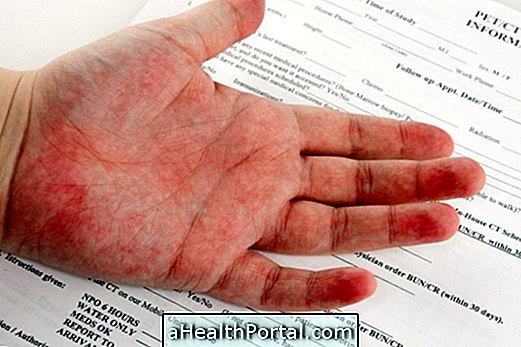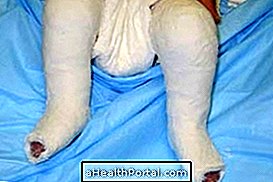A simple test to test for latex allergy is done by cutting a finger off a latex glove and putting it on the person's finger for about 30 minutes and watching for any of the allergy symptoms. In case of giving negative the examination must be done with the whole glove. Another possibility is to do a blood test that identifies the presence of antigens that react with the presence of the material.
Latex allergy is the reaction the body has when it comes in contact with this material, which is a substance that is present in materials made of rubber, such as gloves, balloons or condoms, for example, causing changes directly in the region of the body that contacted the material.
Symptoms of latex allergy
The symptoms of latex allergy in most cases are felt at the site of the skin that had contact with the product with latex. In this way, some symptoms can be:
- Dry and rough skin;
- Itching and redness;
- Reddish eyes and an irritated nose.

Generally, anyone who is allergic to latex also has allergies to foods such as avocado, tomato, kiwi, fig, papaya papaya, walnut and banana and likewise individuals allergic to these foods may develop latex allergy. In addition, it is also common to have allergy to dust, pollen and animal hair.
Main products with latex
Some products that contain latex include: surgical and cleaning gloves, condoms, bottle nipples, pacifiers, plastic toys, lycra clothing and party balloons, for example. In addition, sneakers and gym clothes can also contain latex.

Who is more likely to have this allergy?
Any individual can develop sensitivity or allergy to latex, but some people are more likely to be nurses and doctors who come in contact daily with gloves and personal protective plastic material.
In addition, gardeners, cooks, beauty and construction professionals also often contact this material and therefore also have a high chance of developing the problem.
What to do if you are allergic to latex?
In the case of allergy to latex, whenever possible should opt for equipment that is made of other materials such as polyethylene or polyvinyl gloves, for example.

In the case of condoms, one should choose a latex-free condom, which is sold in pharmacies. In addition, in some cases it may be necessary to take medications such as corticosteroids and antihistamines.







-o-que--sintomas-e-tratamento.jpg)















